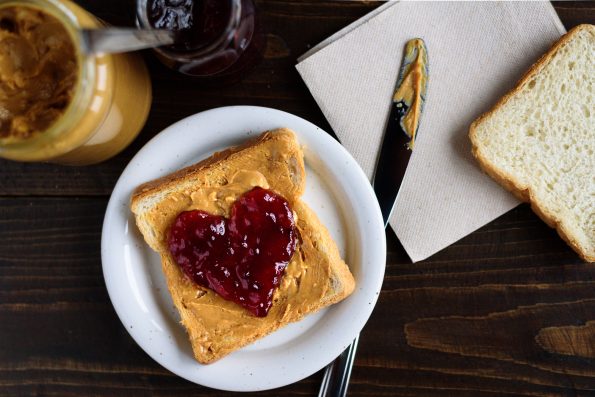The First Patent For Peanut Butter Was Filed In 1895, And Then It Was Established As A Delicacy Among The Elite

The name George Washington Carver carries a lot of clout when it comes to peanuts. No American is more closely associated with peanuts than him.
While the agricultural scientist played an important role in popularizing peanut products in America, he was not the actual inventor of peanut butter. So, who was the creator of peanut butter? And how did it become a staple in our diets?
The earliest written records of peanut butter can be traced back to the Aztecs of Mesoamerica and the Incas of South America, who ground roasted peanuts into a sticky paste a few hundred years before North Americans ever did.
However, their version was quite different from the smooth, creamy spread we apply to our bread today.
Some experts suggest that the first peanut paste may have emerged even before those groups made it.
Possibly, Indigenous people who lived from 200 B.C.E. to 800 C.E. in what is now Peru created the first paste.
The appearance of peanut butter in the modern world is credited to several men. One of them was a Canadian chemist named Marcellus Gilmore Edson.
He was the first to receive a patent for a peanut paste in 1884. His paste was meant for people who struggled to chew food.
The paste was made by roasting peanuts and grinding them between surfaces that reached temperatures of 100 degrees Fahrenheit. After the product cooled down, it was said to have a similar consistency to butter, lard, or ointment.

molenira – stock.adobe.com – illustrative purposes only
Although Edson’s peanut paste never became widespread, it paved the way for later versions of peanut butter.
A decade later, John Harvey Kellogg, an American physician, filed the first patent for peanut butter in 1895.
He boiled peanuts and ground them into a paste for his patients at the Western Health Reform Institute, marketing it as a healthy food product.
He also shared it with wealthy guests at his sanitarium, and they helped establish it as a delicacy among the elite.
Kellogg was known as a Seventh-Day Adventist with eccentric beliefs. One of the reasons he promoted peanut butter was that he considered it a more virtuous alternative to meat.
He endorsed plant-based diets because he believed meat was not easily digestible and stimulated sinful urges.
Since he used steamed or boiled peanuts, the taste of his spread was much more bland than modern peanut butter.
Before the end of the century, an employee of Kellogg’s, John Lambert, invented machinery to produce peanut butter on a larger scale.
He launched his own company, selling the nut butter and the equipment to make it. Ultimately, a rival peanut butter business was given a patent for one of the first peanut butter machines in 1903. Technological innovations would continue to improve the quality of peanut butter.
One significant improvement was made by Joseph Rosefield. Before, consumers of the product would have to stir the peanut butter frequently with a wooden paddle to prevent the naturally occurring oil from separating and spoiling.
In 1921, he patented a chemical process called partial hydrogenation, which allowed peanut butter to stay on store shelves longer without spoiling. Later on, he founded the peanut butter brand Skippy in the 1930s.
By World War One, Americans had turned to peanuts as a result of meat rationing. Thanks to George Washington Carver, families were able to consume peanuts in a variety of ways.
He started out with the goal of wanting to help black farmers in Alabama feed their families. He found that the soil in the region was devoid of nutrients from growing cotton.
So, he began experimenting with plants like peanuts and sweet potatoes, which helped replenish nitrogen in the soil.
He presented his discoveries at conferences and county fairs, showing people how to raise the crops.
Although he did not invent peanut butter, his teachings on peanuts led to the promotion of peanut butter all over the United States.
Since his death in 1943, Carver’s agricultural practices have remained paramount to sustainable farming.
Sign up for Chip Chick’s newsletter and get stories like this delivered to your inbox.
More About:News





